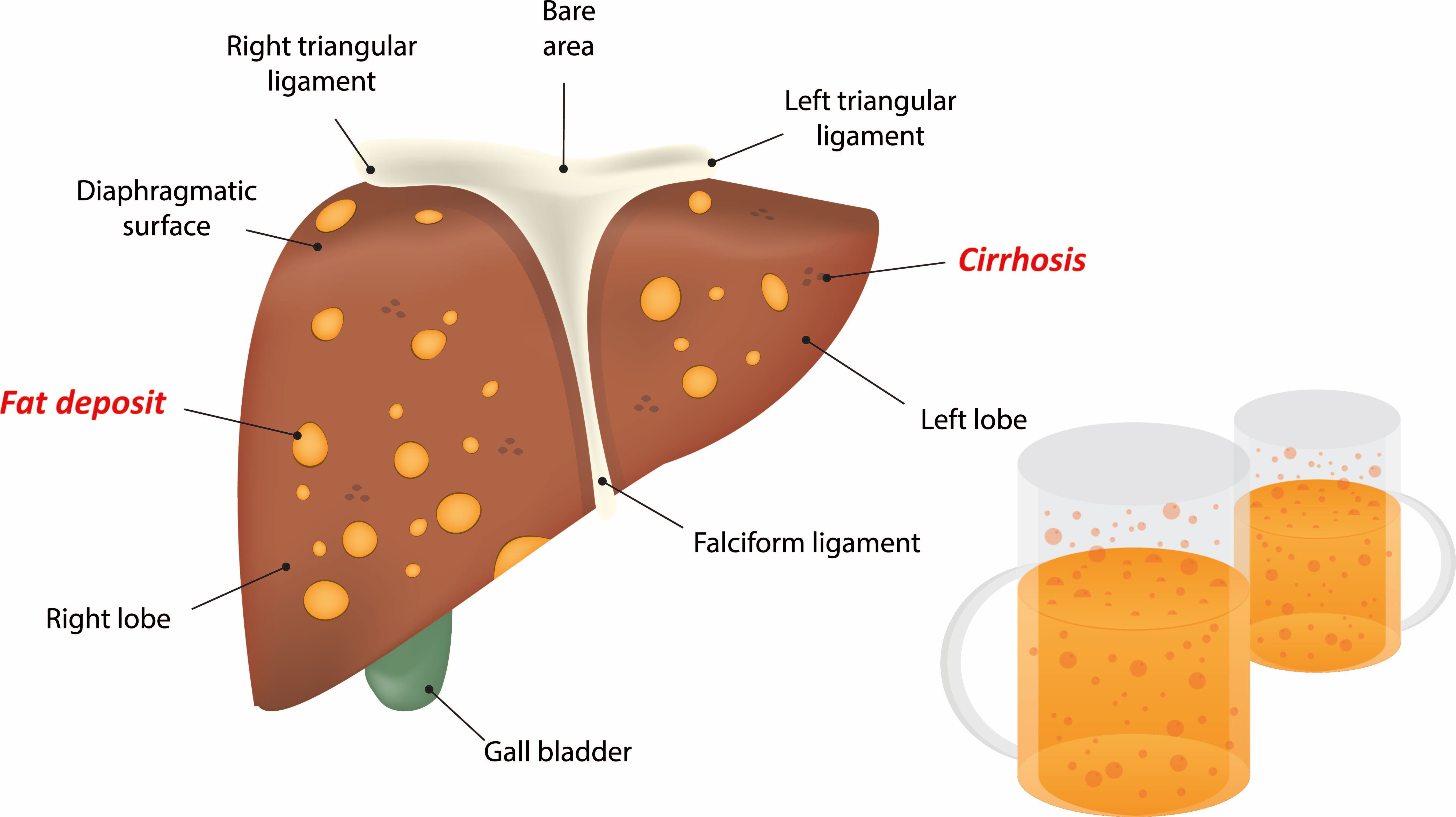Identifying Causes and Effects of Alcohol-Related Liver Disease
Investigators identify a mechanism that’s vital to the progression of alcohol-related hepatitis, paving the way for new treatments.

Alcohol-related liver disease (ARLD), liver damage caused by excess alcohol consumption, is one of the world’s most common causes of morbidity and mortality. ARLD can range from mild accumulation of fat (steatosis) to cirrhosis, and ARLDs are the most common of chronic liver diseases.
ARLD is especially dangerous because it is typically asymptomatic until the liver has already sustained severe damage. So little is understood about the factors that contribute to disease development, making liver transplantation the only reliable cure to date.
This week, however, a team of investigators from MedUni Vienna’s Department of Laboratory Medicine shared their research findings of a new mechanism that exacerbates ARLD.
The objective of the study was to address the function of the polymeric immunoglobulin receptor (pIgR) during ethanol-induced liver disease. The pIgR influences the intestinal levels of immunoglobulin A (IgA), transporting IgA across the epithelial barrier into the intestinal lumen and hepatic canaliculi.
This is important because ARLD is accompanied by microbial dysbiosis, elevated intestinal permeability, and hepatic exposure to translocated microbial products, all of which exacerbate the disease.
Secretion of IgA in the gut is essential for generating immune protection against invading pathogens, thus the impetus to study the pIgR IgA depends upon.
“Our study revealed a build-up of pIgR and IgA in the livers of patients with alcohol-related hepatitis, which is an indication of defects in IgA transport and secretion,” said Tim Hendrikx, PhD, the study’s lead author.
The investigators used several animal models to determine the low levels of IgA in the intestines of mice without plgR aggravate alcohol-induced liver complications, or steatohepatitis. The blood of the mice without plgR also exhibited heightened bacterial translocation. The investigators also found a molecular mechanism that partially restored IgA levels in the intestine, alleviating alcohol-induced liver disease in the mice without plgR.
Livers of patients with ARLD demonstrated an increased colocalization of plgR and IgA within canaliculi and apical poles of hepatocytes. Additionally, plgR-deficient mice developed increased liver injury, steatosis, and inflammation, as compared to wild-type mice. plgR-deficient mice also exhibited elevated plasma lipopolysaccharide levels and more hepatic bacteria, suggesting elevated bacterial translocation.
Overall, the results indicate that dysfunctional hepatic plgR enhances alcohol-associated liver disease (alcohol-associated hepatitis), due to the weakened antimicrobial defense by IgA in the gut.
"Our data show that dysfunction in pIgR in the liver exacerbates alcohol-related liver disease because the antimicrobial response through IgA in the gut is impaired,” Hendrikx summarized. “This means that enhancing pIgR in the liver or increasing the IgA levels in the intestine could be a promising starting point for novel treatment options of alcohol-related liver disease.”










2 Commerce Drive
Cranbury, NJ 08512
All rights reserved.










